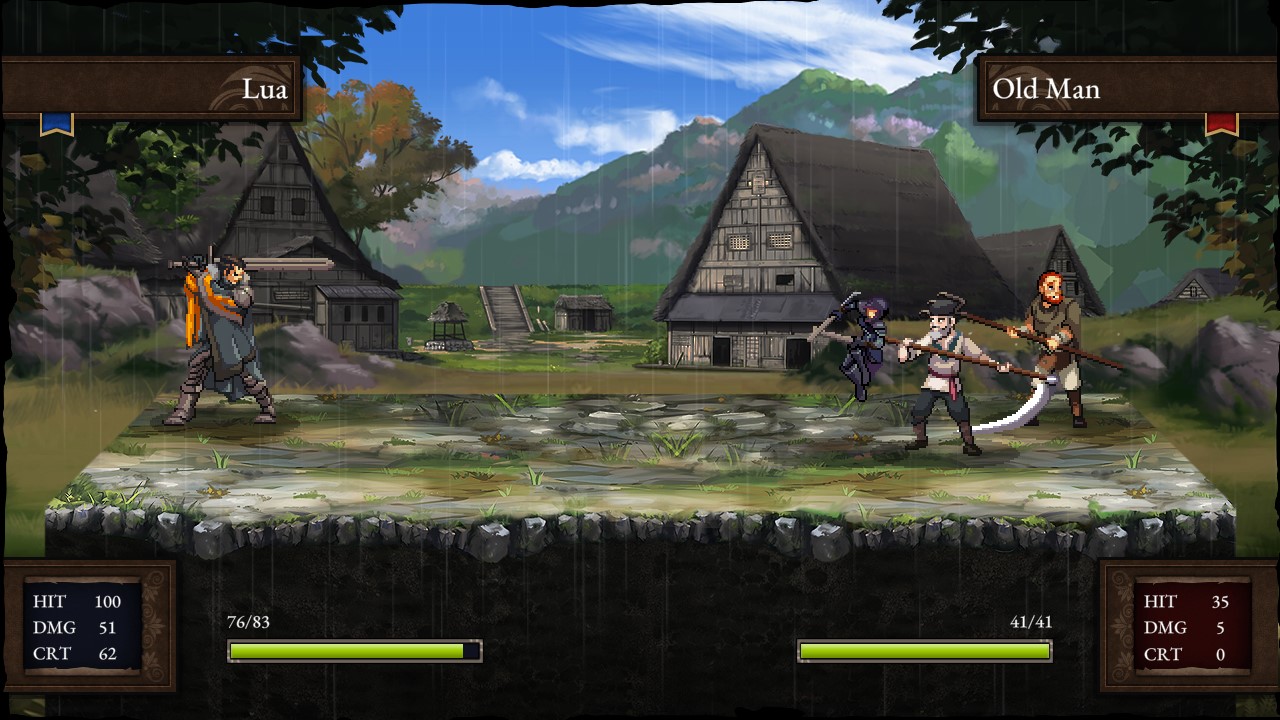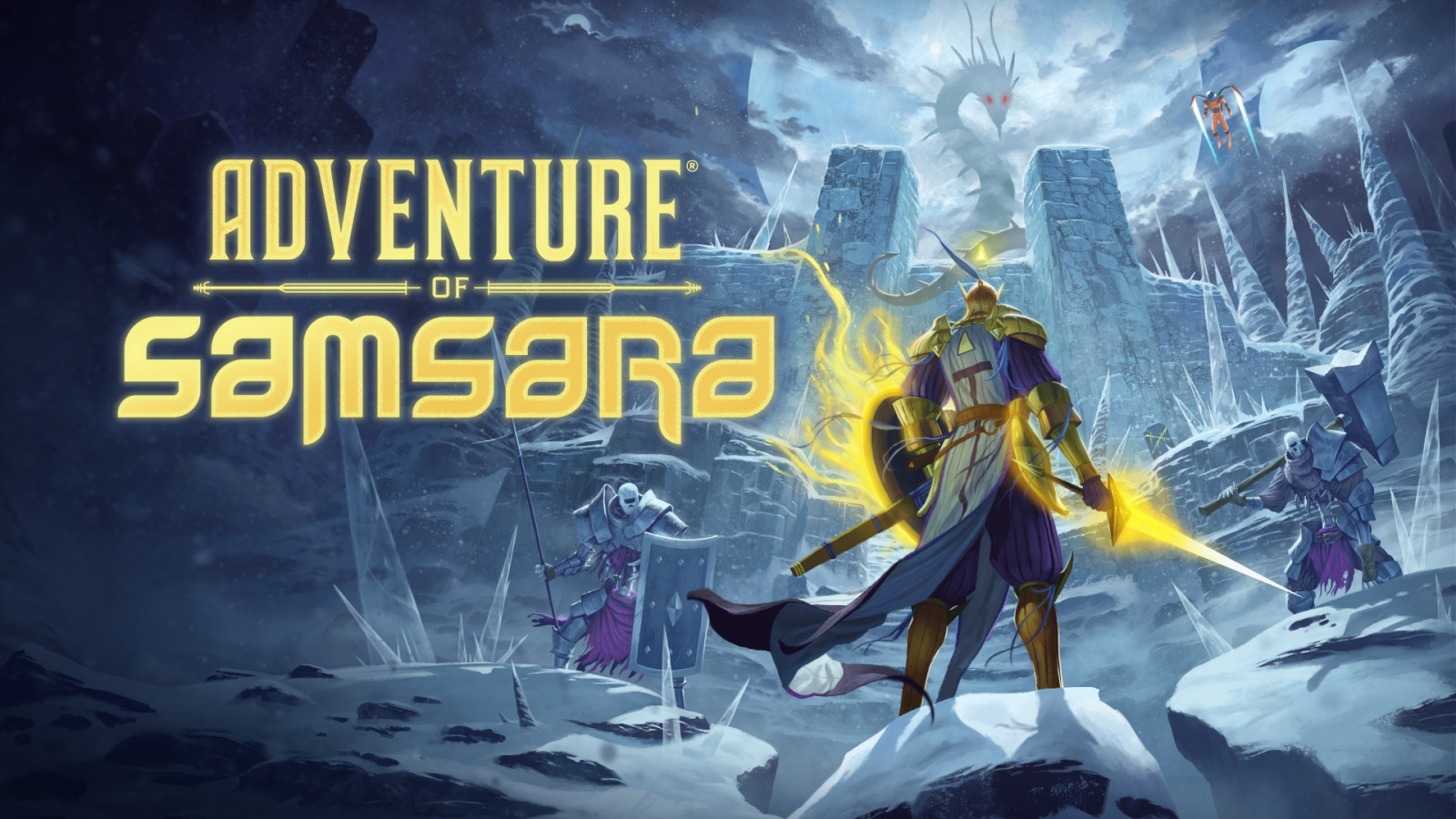Rise Eterna made its debut on the Nintendo Switch through the Nintendo eShop, positioning itself as a love letter to the tactical RPG genre’s golden era.
Developed by Forever Entertainment, this turn-based strategy game aims to recapture the essence of classics like Fire Emblem and Langrisser while introducing a few modern mechanics.
Yet, while its nostalgic veneer is sure to catch the eye of genre enthusiasts, Rise Eterna doesn’t quite hit the mark when it comes to delivering a genuinely challenging or innovative experience. The game opens with a grim premise: Natheal, a mercenary and cook, is sent to investigate his employers’ disappearance, only to discover an entire village massacred.
The sole survivor, a young woman named Lua, immediately distrusts Natheal.
Despite their uneasy alliance, the two protagonists join forces to unravel the kingdom’s secrets.
As the narrative progresses, players encounter 14 unique characters, most of whom are recruited through the main story.
Each character specializes in a particular weapon—swords, lances, or arrows—but unlike Fire Emblem, Rise Eterna forgoes the traditional weapon triangle system.
Instead, weapon types exclusively impact range and power; for instance, lances can strike two adjacent squares, while archers can target foes from afar. Gameplay unfolds on expansive, grid-based maps reminiscent of genre staples.
Players control their team’s movements and attacks during their turn, followed by the enemy’s response.
Objectives typically involve eliminating all foes, defeating specific targets, or reaching a designated endpoint.
This familiar approach is complemented by a few notable twists.
Instead of conventional leveling, characters acquire skill points allocated across a dual-path skill tree.
Additionally, collectible gems can be slotted for stat boosts or repurposed as crafting materials.
This flexibility lets players tailor builds and switch enhancements between characters as needed, adding a modest layer of tactical planning. Resource management is another key element.
Stages are scattered with pick-up spots containing materials like berries, wood, or stone, essential for crafting potions, chest keys, and specialized tools.
Players are encouraged to replay levels to gather resources and recruit optional characters hidden in repeat playthroughs.
However, early scarcity of materials can hamper progress, requiring frequent revisits in the initial chapters. Despite a robust foundation, Rise Eterna’s difficulty plateaus well before the story’s end.
As characters progress through the skill trees, they can become unbalanced—some even attain skills that let them double attack, reposition after kills, or evade enemy reach entirely.
One example involves an archer who, once upgraded, could defeat multiple enemies each turn without risk, trivializing most encounters.
While the game introduces hazards like hidden traps—poison and bleed effects that persist over turns—these threats become rote once players understand how enemy behavior signals trap locations. Several interface issues affect the overall flow.
The restriction of only six characters per battle sidelines much of the 14-person roster, and the UI often obscures crucial information, making it difficult to plan strategic moves efficiently.
Unlike Fire Emblem, players can’t lock enemy attack ranges onscreen while maneuvering, and there’s no quick way to review enemy or ally inventories, resulting in unnecessary menus and lost momentum. Narratively, Rise Eterna falters in its conclusion, with abrupt transitions and unresolved character arcs that leave many story beats feeling unearned.
The game’s morally ambiguous decisions—sometimes requiring players to commit questionable acts—are glanced over without sufficient depth or reflection. Visually, the title draws on classic inspirations, with map designs recalling the Nintendo DS era and fluid combat animations evoking early Fire Emblem entries.
This retro charm is perhaps the game’s strongest selling point, tapping into nostalgia for seasoned tactical RPG players.
However, despite its devotion to old-school mechanics, Rise Eterna lacks the staying power or polish to join the ranks of its inspirations. In summary, Rise Eterna on Nintendo Switch is an earnest tribute to turn-based tactical games.
While its streamlined combat, flexible skill trees, and resource management systems offer moments of enjoyment, genre veterans may find themselves ultimately let down by the lack of challenge and rough edges in UI and storytelling.
For fans seeking to revisit the genre’s roots while waiting for the next big release, Rise Eterna is a decent—if unremarkable—diversion.
Developed by Forever Entertainment, this turn-based strategy game aims to recapture the essence of classics like Fire Emblem and Langrisser while introducing a few modern mechanics.
Yet, while its nostalgic veneer is sure to catch the eye of genre enthusiasts, Rise Eterna doesn’t quite hit the mark when it comes to delivering a genuinely challenging or innovative experience. The game opens with a grim premise: Natheal, a mercenary and cook, is sent to investigate his employers’ disappearance, only to discover an entire village massacred.
The sole survivor, a young woman named Lua, immediately distrusts Natheal.
Despite their uneasy alliance, the two protagonists join forces to unravel the kingdom’s secrets.
As the narrative progresses, players encounter 14 unique characters, most of whom are recruited through the main story.
Each character specializes in a particular weapon—swords, lances, or arrows—but unlike Fire Emblem, Rise Eterna forgoes the traditional weapon triangle system.
Instead, weapon types exclusively impact range and power; for instance, lances can strike two adjacent squares, while archers can target foes from afar. Gameplay unfolds on expansive, grid-based maps reminiscent of genre staples.
Players control their team’s movements and attacks during their turn, followed by the enemy’s response.
Objectives typically involve eliminating all foes, defeating specific targets, or reaching a designated endpoint.
This familiar approach is complemented by a few notable twists.
Instead of conventional leveling, characters acquire skill points allocated across a dual-path skill tree.
Additionally, collectible gems can be slotted for stat boosts or repurposed as crafting materials.
This flexibility lets players tailor builds and switch enhancements between characters as needed, adding a modest layer of tactical planning. Resource management is another key element.
Stages are scattered with pick-up spots containing materials like berries, wood, or stone, essential for crafting potions, chest keys, and specialized tools.
Players are encouraged to replay levels to gather resources and recruit optional characters hidden in repeat playthroughs.
However, early scarcity of materials can hamper progress, requiring frequent revisits in the initial chapters. Despite a robust foundation, Rise Eterna’s difficulty plateaus well before the story’s end.
As characters progress through the skill trees, they can become unbalanced—some even attain skills that let them double attack, reposition after kills, or evade enemy reach entirely.
One example involves an archer who, once upgraded, could defeat multiple enemies each turn without risk, trivializing most encounters.
While the game introduces hazards like hidden traps—poison and bleed effects that persist over turns—these threats become rote once players understand how enemy behavior signals trap locations. Several interface issues affect the overall flow.
The restriction of only six characters per battle sidelines much of the 14-person roster, and the UI often obscures crucial information, making it difficult to plan strategic moves efficiently.
Unlike Fire Emblem, players can’t lock enemy attack ranges onscreen while maneuvering, and there’s no quick way to review enemy or ally inventories, resulting in unnecessary menus and lost momentum. Narratively, Rise Eterna falters in its conclusion, with abrupt transitions and unresolved character arcs that leave many story beats feeling unearned.
The game’s morally ambiguous decisions—sometimes requiring players to commit questionable acts—are glanced over without sufficient depth or reflection. Visually, the title draws on classic inspirations, with map designs recalling the Nintendo DS era and fluid combat animations evoking early Fire Emblem entries.
This retro charm is perhaps the game’s strongest selling point, tapping into nostalgia for seasoned tactical RPG players.
However, despite its devotion to old-school mechanics, Rise Eterna lacks the staying power or polish to join the ranks of its inspirations. In summary, Rise Eterna on Nintendo Switch is an earnest tribute to turn-based tactical games.
While its streamlined combat, flexible skill trees, and resource management systems offer moments of enjoyment, genre veterans may find themselves ultimately let down by the lack of challenge and rough edges in UI and storytelling.
For fans seeking to revisit the genre’s roots while waiting for the next big release, Rise Eterna is a decent—if unremarkable—diversion.




